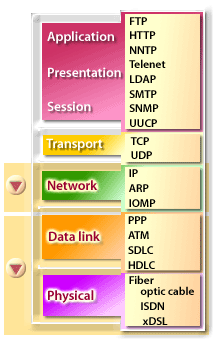| Lesson 6 | Remote access protocols |
| Objective | Identify the three Protocols used for Remote Access |
Remote Access Protocols
In addition to an IP address, you need a remote access protocol to connect to the Internet.
A remote access protocol is a communications standard that allows your computer to talk to the remote network. If you ever intend to work from home, you will appreciate this service. After all, it enables telecommuting.
There are three common remote access protocols used today:
- PPP,
- PPTP,
- and SLIP.
PPP
Point-to-Point Protocol (PPP) is the data link protocol emerging as the de facto choice of remote access protocols. PPP is the most common protocol used for dial-up access. In addition, to providing speed and reliability, PPP offers:
- Data compression
- Error control
- Support for multiple network protocols
- Security through password protection methods
VPN
Point-to-Point Tunneling Protocol (PPTP), now commonly referred to as VPN (Virtual Private Networking) is Microsoft's version of PPP that encapsulates packets from other protocols for transmission over an IP network. It is used to create a secure network utilizing public lines (the Internet). VPN essentially enables users access to a secure corporate network from remote locations (such as from a salesperson's portable computer located in a hotel room). Prior to VPN, a dedicated rented line was required from point-to-point to assure high levels of security.
SLIP
Serial Line Internet Protocol (SLIP) is a protocol that provides dial-up access to the Internet or between two LANs. It's typically used to connect a workstation to a TCP/IP network. However, it lacks several features. Unlike PPP and PPTP, which both support secure connections via password encryption and error control, SLIP:
- Does not encrypt passwords
- Does not support error checking
The following diagram contains information with respect to 1) Network and 2) Datalink components.

Point to Point Virtual Private Network
In the next lesson, you will learn about protocols used for email.
In the next lesson, you will learn about protocols used for email.
Ad TCP/IP Guide